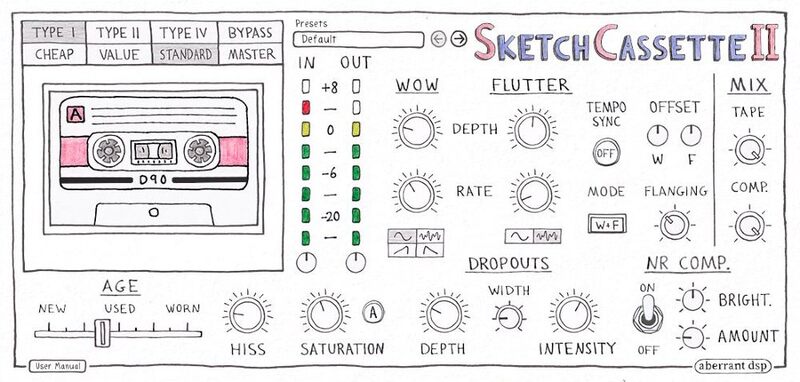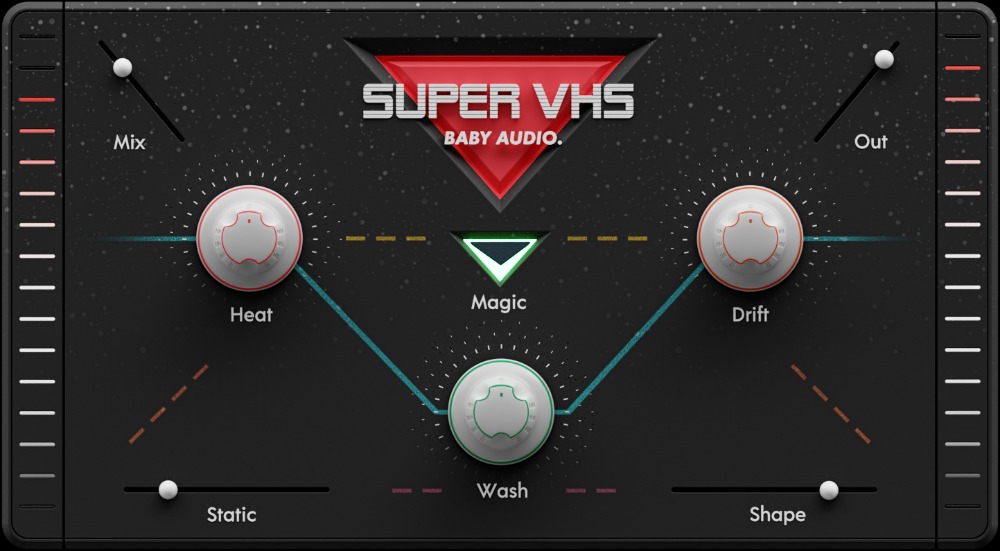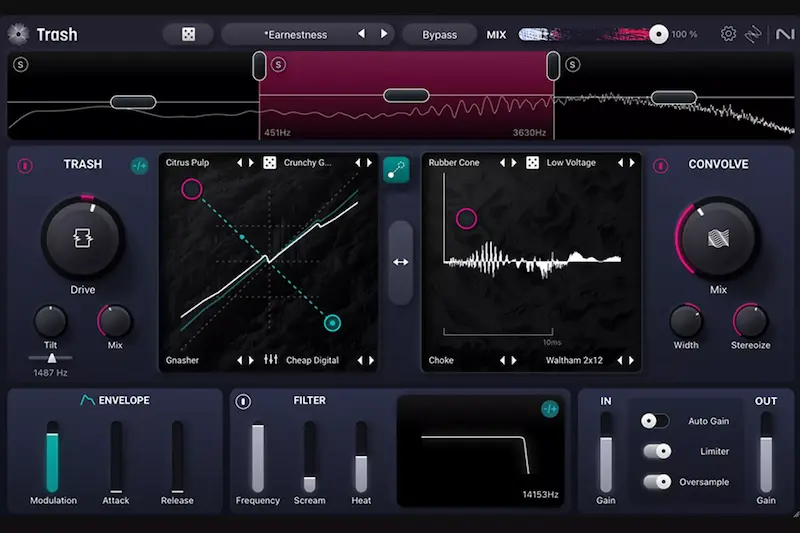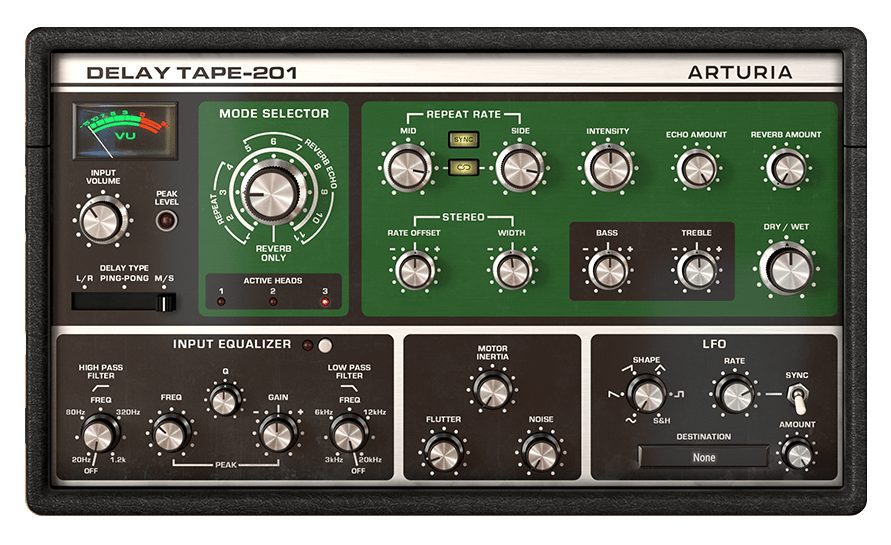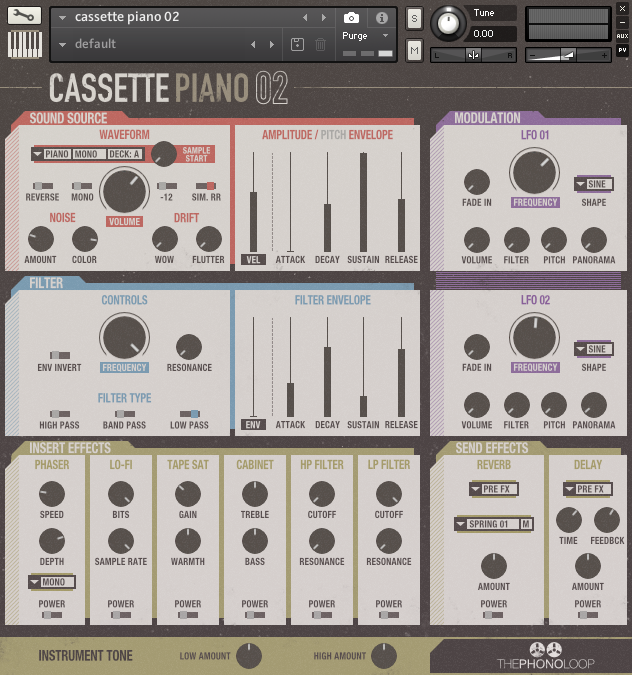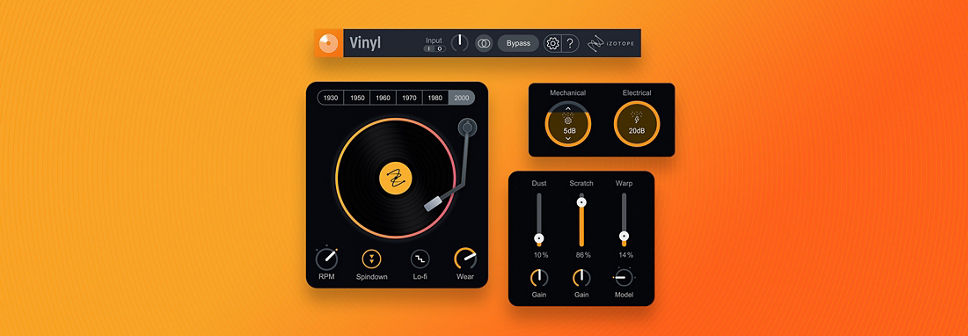Best Lo-Fi Plugins
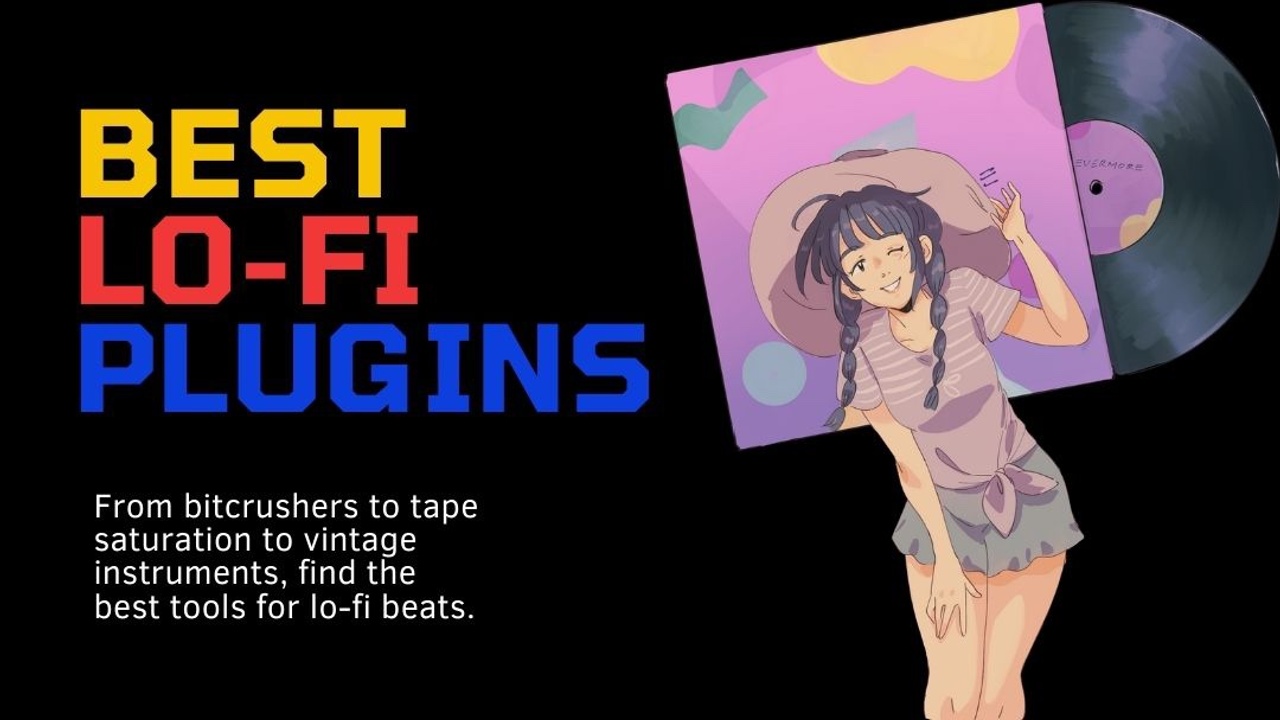
One ironic thing in modern music production is many of us have collectively decided to forgo the cold yet pristine nature of the digital realm for the retro uncertainty of lo-fi. Of course, we search endlessly for that sweet lo-fi sound because there is nothing that can transport us to a warm, nostalgic place quite like it.
Beyond finding the best samples and using the proper recording techniques, achieving a lo-fi sound means using the right plug-ins. If you’re looking to create lo-fi textures in your recordings, come with us as we explore the best lo-fi plugins on the market today,
Note: some of the links below may be affiliate links, meaning that I receive a commission if you purchase through them.
History of Lo-Fi Hip Hop Sampling
Lo-Fi hip hop sampling has a history so vast that we could write an entire book about it. However, we’ll try and summarize as best as we can.
Lo-fi hip-hop sampling started back in the early 2000s. Many people attribute the start of lo-fi hop hop to artists like Nujabes, who connected the genre to renowned anime, such as Cowboy Bepop and Samurai Shampoo. Of course, J Dilla was also one of the pioneers of lo-fi hip-hop in the same era, mixing dusty drum beats with obscure jazz samples.
The sound would continue evolving throughout the 2000s thanks to artists like Knxwledge, Madlib, Kupla, Idealism, Shamana, and many others.
While sampling used to consist of artists going to record stores to dig through crates and purchase a bunch of records to hopefully find a suitable break or melody on, nowadays, artists primarily use platforms like LoopCloud and Splice (here's the differences of LoopCloud vs. Splice).
And if you're looking for some fresh samples to use with the plugins reviewed below, click here for a list of the best sites for free samples & loops.
While the way people produce lo-fi hip hop has changed drastically, the minimalism and sonic elements are still very much present.

| Lo-Fi Plugin | Pros | Cons | Buying Options |
|---|---|---|---|
| Sketch Cassette 2 | - versatile - affordable - sound great |
- none | Check the price of Sketch Cassette 2 |
| Super VHS | - Instant 80s vibe - Affordable |
- one trick pony | Check the price of the Super VHS |
| Trash | -Most powerful - Multi band options - Tons of presets |
- complicated |
🏆Check the price of Trash 2 (recommended plugin)🏆 |
| Retro FI |
-All-in-one plugin |
-none | Check the price of Retro Fi |
| Delay Tape 201 |
-Great reverb |
-a little complicated | Check the price of Delay Tape 201 |
| Casette Piano |
-Great lo-fi piano |
-Requires Kontakt -A little complicated |
Check the price of Cassette Piano 2 |
| iZotope Vinyl | -Free -Tons of vinyl options |
-none |
Best LoFi Tape Cassette Plug-in - Sketch Cassette 2
If you’re looking to emulate the warm, warble, and noisiness of an old cassette tape, then Sketch Cassette 2 from Aberrant DSP is a perfect choice. While the first iteration was excellent, the second iteration has been updated with a sleeker interface and a few more back-end changes.
The plug-in centers its focus around all of the unique, quirky attributes of this retro medium. Insert your boomy drum breaks or sterile piano chords into Sketch Cassette 2 to add some life and fuzz.
The Sketch Cassette 2 plugin comes with several great presets to get you started, though it is just as easy to manipulate when dialing in the sounds you want. We love how detailed the plugin designers go with Cassette 2, adding everything from dropouts to tape skips.
With a simple click, you can change the flavor of the tape deck and use the two meters to monitor your audio levels. When pushing the parameters of the plugin to their limits, you push your sounds into a more experimental realm.
One way in which Aberrant DSP was able to push this plugin even further was by adding an FM mode, which allows users to manipulate controls like wow and flutter. Add tape filtering and compression to the mix, and you have a wildly versatile plugin capable of providing almost every unique characteristic of lo-fi music you could ask for.
Of course, one thing that surprises many producers about this plugin is how little it costs. If you’re in the market for lo-fi weirdness on a budget, then Sketch Cassette 2 is a great option!
Benefits of Sketch Cassette II
- Unique sounding lo-fi options
- Fun interface
- Easy-to-use
- Sounds great
- Cheap
- Versatile
Cons of Sketch Cassette II
- None
Best LoFi VHS plugin: Super VHS
If you’re looking for a lo-fi VHS plugin without complications, then the Super VHS plugin from Baby Audio is a wonderful choice. There are three main controls on the interface of the Super VHS, which keep it simple to use. These three controls include Heat, Drift, and Wash.
Of course, if you want to tweak any of the Super VHS plugin’s finer parameters, you can use the smaller sliders around the main knobs.
✅ Check the price of the Super VHS
The Heat effect is a saturation knob of sorts, which can help beef up an instrument or vocals with the use of lo-fi harmonics. The Wash control adds a room reverb, which sounds like a cheap, glassy room reverb from the early 80s. If you’ve ever played an old Casio keyboard with built-in reverb, you’ll know what we mean.
Lastly, the Drift parameter uses an LFO to create variations in pitch and time. You get just a slight amount of warble and chorus to give you that “out-of-sync” effect.
One of our favorite things about this plugin is the ‘Magic’ button, which provides any instrument it is placed on with a creamy and classic coloration. Another unique thing that we like to do with this plugin is automate the ‘Drift’ parameter, which creates a sense of movement in your mix.
As with some of the other plugins on this list, Super VHS was made to emulate a very particular format. If you’re a fan of the sound of old VHS tapes, then this is the perfect plugin to get the sound you’re after.
Pros of the Super VHS
- Nails that VHS sound
- Tons of character
- Affordable
- Simple interface
Cons of Super VHS
- One trick pony
- Can be a little too characterful
🏆 Best LoFI Bit Crusher: Izotope Trash 🏆
Not only is Trash one of the best bit crusher plugins on the market today, but it is also one of the most versatile lo-fi and distortion plugins out there, period. There's a reason I'm giving it the top spot.
It's been given a recent face-lift and some new features, and we have yet to find any plugin that surpasses it in terms of flexibility and versatility. There are so many algorithms within Trash that it would take us forever to dive into. From the custom waveshaping to the pre/post filters to the drive algorithms, there is so much you can do with Trash.
One of the main secrets to Trash is that it relies on multi-band processing. You can use different types of distortion to make real-time changes. No matter if you are looking to give your low-end some added power or your high-end a bit of crushed grit, Trash 2 can get the job done.
Beyond all of that, you can use the wet and dry knob to mix things in parallel. One of our favorite ways to use parallel processing is with drums. Sending your drums into Trash with a 50% wet/dry control can give you a dirty, distorted, lo-fi sound, all without ruining the punch and integrity of your dry drum sound.
Of course, Trash isn’t only for drums. You can use it just as strategically on synths, basses, guitars, pads, and anything else your heart desires. There are 100+ impulse responses to dive into, leaving you with endless sounds to explore, from old radios to crazy devices. Taking a sample and transforming it into a completely new state is easier than ever with Trash.
With tons of great filters and EQ processing, a broad range of distortion sounds, a powerful waveshaper, expanded convolution, and cutting-edge modulation, Trash is one of the most impressive plugins on the market.
Pros of Trash
- One of the most versatile sound shaping plugins ever
- Incredible precision
- Relatively affordable
- Totally unique
- Great presets
Cons of Trash
- Complicated interface
- Stiff learning curve
Best Plugin for Lo-Fi Hip Hop: Waves Retro Fi
Waves has a history of making great plugins. But they really did something cool with the all-in-one Retro Fi. This plugin includes everything you need to make any sound or sample instantly Lo-Fi. And its loaded full of presets so you can quickly browse for that perfect amount of grit - or create your own!
In the first section, called "Device", you get to sculpt your sound by era, from the 50s to the 80s. You also get to do some basic tone shaping and apply a really colorful compressor for that vintage sound.
From there, the sound goes to the "Space" section, allow you to apply reverb and delay to create trippy, lo-fi vibes. These spaces are saturated and sound just like they came from yester-year.
Moving on, you have the option of injecting over 60 different types of "Noise" into your signal to get that lo-fi vibe. Whether its the sound of a cassette tape or a vinyl crackle, you can mix just the right amount of grit into your track.
Finally, there are two different engines to simulate the mechanical aspects of the original and sampled recording. This allows you to add complex wobbles to your sounds, enhance the feeling of an old recording.
On top of that, there's a mono control and high-pass and low-pass filters. Plus it's got a really cool, fun looking GUI.
Pros of Retro Fi
- All-in-one approach to lo-fi
- Affordable
- Fun
Cons of Retro Fi
- None
Best LoFi Delay: Delay Tape 201
Arturia started back in 1999 and has become quite famous in the audio community for recreating near-perfect digital versions of vintage analog synthesizers. With unique algorithms and a team of audio specialists, Arturia can create astounding replicas of some of the music realm’s favorite instruments and musical devices from the past.
The introduction of the Delay Tape 201 was an absolute game-changer for those who used this iconic, green-fronted hardware delay.
✅ Check the price of Delay Tape 201
Everything there is to love about the tones that come from vintage tape delay hardware can be found in the Delay Tape 201 from Arturia. This plugin is straightforward to tweak, unlike some delay plugins, and provides a number of authentic delay emulations.
Whether you’re looking to create reverberating space for your tracks to soak in or analog-style repeats to toss your tracks in every direction, this tape delay can handle it.
What makes this one of the best lo-fi plugins is the prevalence of this style of tape delay in loft beats. Whether gently adding rhythm or creating warbley atmospheric faces, a solid tape delay VST is crutch for your loft productions.
One of the coolest surprises we found with this plugin was the spring reverb tank. There is nothing quite like spring reverb to create a lush and harmonically complex space. You get authentic, retro nuances thanks to the TAE modeling technology that Arturia uses to model its software.
The delays, however, are what truly matters with the Delay Tape 201. From the Echoplex to the Echo Chamber to the EchoSonic, every kind of analog delay sound that you could imagine can be found in the Delay Tape 201.
There are multiple delays and reverb modes found on the plugin, all of which can be synced perfectly to your DAW. Of course, the fun doesn’t stop there. The Delay Tape 201 gives users the ability to mess with advanced modulation controls, including LFOs, to unleash an entirely different world of creativity.
Pros of Delay Tape 201
- Versatile delay
- Beautiful interface
- Warm, lush, vintage sounds
- Also a spring reverb!
Cons of Delay Tape 201
- Somewhat complicated
Best LoFi Piano VST: Cassette Piano 2
While all of the plugins on this list are for processing other samples and instruments, we figured we’d add in one of our favorite lo-fi instrument plugins for those who want to get the sound of lo-fi right off the bat without any additional processing.
✅ Check the price of Cassette Piano 2
Cassette Piano 2 is a lovely upgrade from the first iteration, bringing users an entirely new set of samples from an old upright piano recorded in a ballet studio. With all of the tiny imperfections of these recordings, you get a natural yet flavorful sound.
Of course, the real magic came when the team decided to process these through four different tape decks, which users have the ability to toggle through when using the plugin.
With four different decks to choose from, including both mono and stereo decks, you get to choose between a range of pitch instability, noisiness, and quality. You can easily dial in more or less noise with the noise knob as well.
Cassette Piano 2 runs on Kontakt from Native Instruments and offers a crystal clear interface that is very easy to manipulate. The modulation section includes an amplitude envelope with velocity modulation, two independent LFOs with five shapes and four destinations, a pitch envelope with an inversion switch, and a filter envelope with an inversion switch.
Users can create space around their pianos using four custom impulses, including halls, corridors, and springs. They’ve also added a two-band equalizer at the bottom of the plugin, which makes it easy to adjust the tone of the instrument slightly.
Overall, the Cassette Piano 2 is a fun and useful lo-fi production instrument every lo-fi hip hop producer should have in their toolbox. With a few solid presets to get you started, you’ll be making weird noises in no time!
Pros of Cassette Piano 2
- Super lofi piano
- Tons of character
- Cheap
Cons of Cassette Piano
- It sounds like a loft piano, so it's not versatile for other purposes
- One trick pony
Best Free LoFI VST: Izotope Vinyl
Izotope has become one of the top dogs in the plugin game over the past decade, creating mixing and mastering suites that use artificial intelligence and machine learning. However, when you look back to the early days of Izotope, you find plugins like Izotope Vinyl, which still have a special place in our hearts today.
Izotope Vinyl is the OG of lo-fi plugins and the best part about it is that it is absolutely free! If you’re looking to recreate all of the old-school charm of an LP, Vinyl is the go-to plugin. You get the dustiness, scratchiness, and mechanical noises you would expect to get from a needle spinning its way around a record.
One of the cool features on Izotope Vinyl is the “Decade” knob, which allows you to get the sound of commercial recordings from the 2000s all the way back to 1930, when some of the very first commercial sound recordings hit the market.
Beyond that, you can dial in the different vinyl nuances and artifacts to get your desired sound, as well as unique parameters like pitch instability, which give you that sweet warble sound everyone is looking for.
To get the effect of a DJ slowing down the playback on a turntable, you can use the Spin Down effect.
In all, Izotope Vinyl is a must-have for every lo-fi hip hop artist. With a free price tag, there is no reason not to have it!
Pros of Izotope Vinyl
- Incredible vinyl emulation
- Lots of tweaking
- FREE
Cons of Izotope Vinyl
- None
Frequently Asked Questions
Here are some of the most frequently asked questions about the best loft plugins.
What Is The Difference Between Distortion and Lo-Fi?
The major difference between distortion and lofi is the way that they process a signal. Distortion will typically add harmonic content while amplifying a signal. On the other hand, a lo-fi effect will reduce the quality of the sample or instrument, turning down parameters like sample rate and bit depth.
Of course, there can be a bit of overlap between each, as a lof-fi bitcrusher plugin will introduce a unique form of distortion to a sound when used.
When it comes to deciding which one you are going to use, you need to think of your end result. If you simply want to add some drive to get the beefy sound of additional harmonics, a distortion plugin should suit you.
However, if you want to reduce the digital perfection of a sample or instrument to make it sound old or less dynamic, a bitcrusher is the better choice.
What Is A Bitcrusher?
A bitcrusher deals with resolution reduction and sample rate reduction, producing distortion and limiting the bandwidth of digital audio to get a warmer or harsher sound. The more sample rate reduction you use, the more distorted or mangled a sound will become.
A bitcrusher works by reducing bit depth. A bit is the smallest unit of information that a computer recognizes. When you increase your bit number, your computer receives exponential value possibilities.
The lower your bit depth, the lower the dynamic range of the signal. 16-bit audio, for example, has a max signal-to-noise of 96dB. 24-bit audio, on the other hand, has a max of 144dB.
Beyond messing with the bit depth, though, a bitcrusher will typically give you the ability to manipulate the sample rate. When you take the sample rate of a piece of audio and reduce it to a very low point, you get a unique form of distortion called aliasing. Aliasing is typically something we would want to avoid in the audio realm, though just like phasing, bitcrushing can be used as a neat effect when used intentionally.
How To Use Hi-Pass and Low-Pass Filters With Lo-Fi Processing
When you listen to an old song on vinyl, the first thing you probably notice is the reduced frequency range. The soaring highs and boomy lows aren’t there with vinyl. You almost get a slight band-passed tone, which accentuates the mid frequencies.
The Importance of Sampling (and Resampling) for Lo-Fi music
So much of Lo-Fi music is based on using samples that sounds gritty and ever-so-slightly manipulated. There are a few different samplers that work well for this, from Serato Sample to Arturia CMI V. There's a lot to say about samplers, which is why I've put together this post on the Best Sampler VSTs.
In your DAW, the best way to mimic this sound is with high and low-pass filtering. Simply rolling off your lows and highs using filters can get you away from that polished, digital sound. Plus, by getting rid of high frequencies, you can reign in your bitcrushing and distortion effects.
If you feel that you’ve taken too much presence away after filtering out your highs, you can always put a bump in your EQ anywhere from 1kHz-6kHz.
Conclusion: Keepin’ It Lo-Fi
There is no doubt that we have created a special place in our hearts for lo-fi music. This warbly, warm, and nostalgic method of production is one that many producers are looking to learn. Luckily, there are plenty of plug-ins that make the sound easy as pie to achieve in your DAW.
Make sure to download these lo-fi plugins to create the next retro track for an era of music listeners to study, sleep, and chill to!
From a Frustrated Producer in a Ragtag Bedroom Studio to Major Placements on TV Earning $1,000s!
My name is Evan, and I've been making music since around 3rd grade. I'm from San Diego, California, but I've lived in Washington, DC for the last 20 years.
While I still have a full-time day job, I have created systems that have allowed me to produce dozens of songs a year in my spare time.
My songs have been on Netflix, TV shows like the 90 Day Fiance, an award-winning indie film, and NPR’s “All Thing Considered.” They've also been streamed millions of times.
In addition to being a music producer, I am passionate about teaching people how they can make professional-sounding music and earn money licensing it, all in their spare time.
Thousands of musicians, like yourself, have trusted me to guide their musical journey. My YouTube videos have been watched nearly a million times. And my story has been in Forbes, Side Hustle Nation, and the Side Hustle School.
